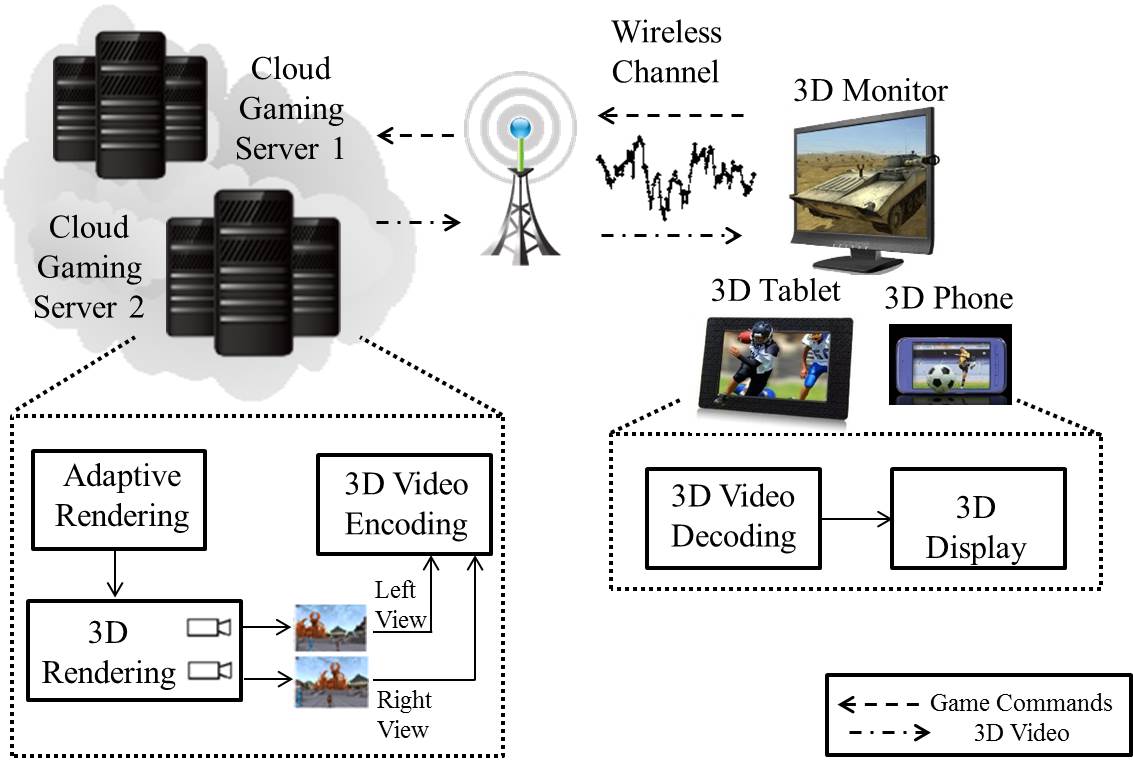Enabling Cloud based 3D Gaming on Mobile Devices

Overview
With the rapid growing of mobile 3D display devices and 3D gaming, along with powerful computating support from cloud, there is a trend of enabling cloud based mobile 3D gaming, which means to let users play 3D games on mobile devices while pushing computational costs into the cloud. However, a significant challenge for Cloud based 3D Mobile gaming is to be able to stream the large amount of video data over limited bandwidth and dynamically variable wireless channel. To ensure good user experience such as low response time and high video quality, we need to develop techniques to ensure that the encoded bit rate of the resulting 3D video is below the changing data rate of the mobile channel. Recent studies have shown that the binocular fusion in the human visual system can enable encoding the left and right view videos with different bit rates, such that if one of the views has less video quality than the other view, the human brain can still be able to generate an acceptable 3D view. In this research, we are investigating extending the above logic to 3D rendering the possibility of rendering one of the views with less graphics richness/complexity, and thereby needing less bit rate for the resulting video, without compromising overall user experience. If the above is possible, then we can develop channel aware rendering adaptation, dynamically changing the richness of the rendered left and right views to adjust the resulting video encoding bit rate to the prevailing channel data rate.
Cloud Mobile 3D Gaming approach
In order to study the possible solutions to alleviate the confilct between limited bandwidth and large amount of 3D gaming video data, we developed a platform, which enabled cloud based 3D gaming. In particular, we enabled a cloud server to capture and encode a 3D video from a 3D gaming engine and then let the 3D client device to decode and display the 3D video. Users send control commands from the client to the server. In this way, users can experience a 3D gaming which requires high computational power through a low-computational-power mobile device.
We are currently addressing the following problems based on the platform mentioned above:
- Develop a model to quantitatively measure the Mobile 3D Gaming User Experience.
- Study the impact of asymmetric graphic rendering to the Mobile 3D Gaming User Experience.
- Develop a set of adaptation algorithms to enable high Mobile 3D Gaming User Experience given specific network conditions
Associated Publications
